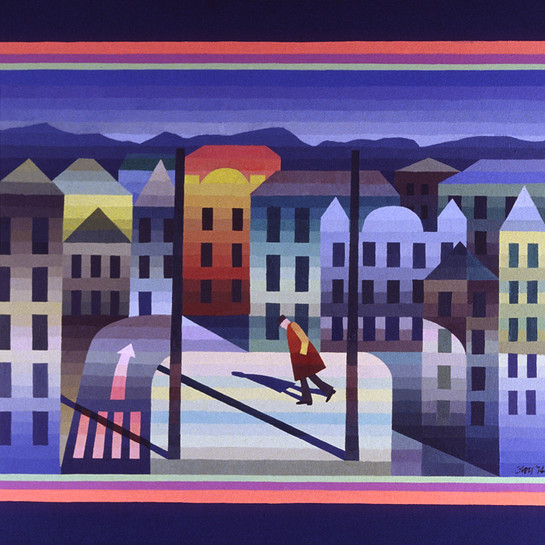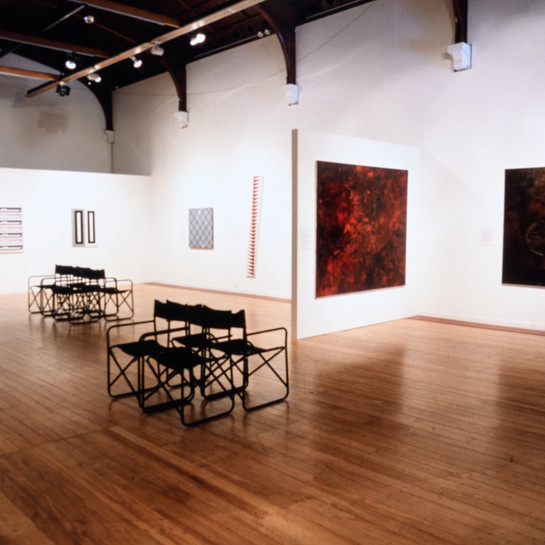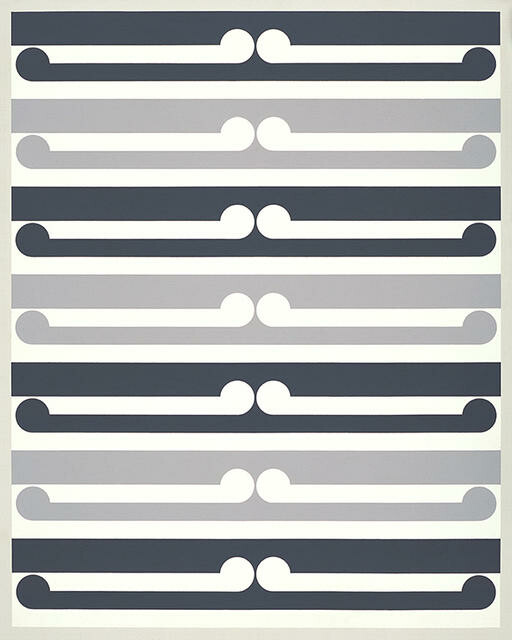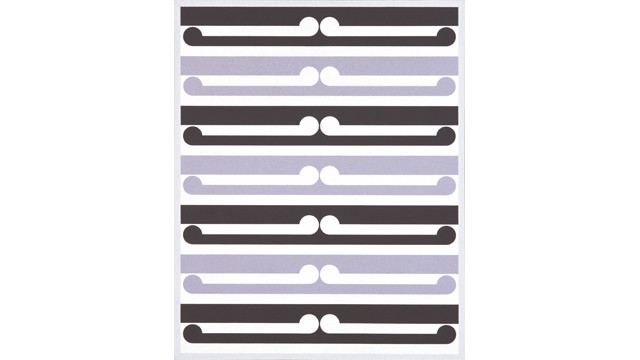Gordon Walters
Aotearoa New Zealand, b.1919, d.1995
Untitled
- 1981
- Acrylic on canvas
- Purchased, 1982
- Reproduced courtesy of the Gordon Walters Estate
- 1020 x 820mm
- 82/37
Tags: abstraction, koru (pattern), Māori (culture or style), stripes
Brought to light, November 2009- 22 February 2011
Many opinions have been offered on the remarkable ‘koru’ paintings made by Gordon Walters. Merging the geometry of modernist abstract painting with the unfurling fern motif from Maori art, these paintings are meditations on the theme of exchange – the way forms and ideas move from one place to another and change along the way. In the 1990s the koru works found themselves caught up in a debate about the rights and wrongs of cross-cultural borrowing. More recently, writers have argued that the powerfully visual qualities of these works have yet to be fully explored.
In 1947 Gordon Walters visited Theo Schoon in South Canterbury, where Schoon was recording Māori rock drawings. It was one of many occasions on which Walters drew inspiration from traditional Māori art. When he travelled to Europe in 1950, Walters realised that modern art had learned important lessons from the arts of the Pacific. Soon after, he began working with the koru, or fern bud, motif – a Māori decorative form used on rafter paintings, incised gourds and in tattooing. In the extraordinary series of abstract paintings that resulted, this simple form expresses a vast range of dynamic relationships.
Exhibition History
This modernist abstract work is largely concerned with the interplay between positive shapes and negative spaces. In developing those shapes, Gordon Walters has taken the koru, or fern bud, and stylised it into a simple horizontal bar with a circular end. The spiral koru features widely in traditional Mâori art. Walters used a hard-edged style in his paintings and drawings, with no obvious brushstrokes or tonal modulation. There is a suggestion of Op(tical) Art in his geometric forms, though Walters was not part of this movement. Walters was born in Wellington and studied art at Wellington Technical College while he was working as a trainee commercial artist. He travelled to Europe in 1950 and there studied the paintings of Piet Mondrian (1872-1944), as well as the work of French geometric abstractionists. Walters returned to Wellington in 1955 and began painting full-time in 1966. He later moved to Auckland then, in 1976, to Christchurch where he lived until his death. He is regarded as one of New Zealand’s leading abstractionist artists. (Opening Gallery hang, 2003)
Developed from the spiral 'koru' or fern bud of traditional Maori art, this work is part of a series begun by Walters in the 1950s. As the series evolved the organic koru was gradually stylised into a simple horizontal bar with a circular end. A modernist abstract work in which shape and colour form the painting's subject, it is the interplay between positive and negative spaces which enlivens Untitled's hard-edged composition. The title emphasises the fact that there are no symbolic meanings or outside references. "My work," Walters said, "is an investigation of positive/negative relationships within a deliberately limited range of forms... I believe that dynamic relations are most clearly expressed by the repetition of a few simple elements." It is the internal logic of the geometric relationships which we are invited to consider here.
This is a Modernist Abstract work in which shape and colour form the painting's subject. The koru, or fern bud, is a traditional Maori decorative form, which Walters has abstracted and stylised. He has straightened the stem and altered the bud, thereby arriving at his own motif. Walters has alluded to this shape as the essence of form.
"My work," Walters said, "is an investigation of positive/negative relationships within a deliberately limited range of forms… I believe that dynamic relations are most clearly expressed by the repetition of a few simple elements."
Born in Wellington, Walters began studying art at Wellington Technical College in 1935 while working as a trainee commercial artist. Travel and a subsequent position at the Government Printing Office in Wellington were followed by a move into fulltime painting in 1966. Walters taught briefly at the University of Auckland but in 1976 moved to Christchurch where he lived until his death. His work is represented in all major art institutions in New Zealand. (Date unknown - before 2002)




